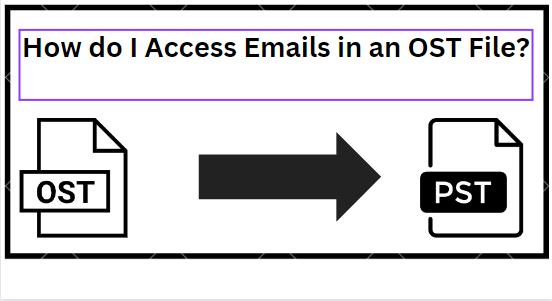How to Ditch Your Smartwatch and Jog Like It's 1982
I remember the first time I heard about fitness trackers that could spit out metrics about my running. A friend lent me what was probably an early-generation Garmin, and I was gobsmacked to learn that it could tell me...


Photo: lzf (Shutterstock)
I remember the first time I heard about fitness trackers that could spit out metrics about my running. A friend lent me what was probably an early-generation Garmin, and I was gobsmacked to learn that it could tell me my exact pace at any given moment. Hey look, I’m running a 10 minute mile! Now look, I’ve sped up a bit and it says 8:00! Until then, the only way I knew to find my pace per mile was to run a mile and see how long it took.
That was sometime in the early 2000s. In the years since, running watches got cheaper, smartphones became a commonplace item, and phones and watches merged to give us gadgets like the Apple Watch.
Now, running has become synonymous with collecting data about running. You wouldn’t go out for a jog without your fitness tracker or at least your phone, right? And then afterward you’re obviously going to check out your pace and mileage, and maybe even your calorie burn. If you choose to follow a program like couch to 5K, you’ll be beholden to an app-based timer to tell you when to walk and when to run.
Having lived through both eras, I’ve seen the pros and cons of running both with and without tech. I bought my own Garmin after trying out my friend’s and I used it for years. But these days I also choose to do most of my runs without any tech at all—just like the old days.
How to figure out the distance you’re running without a fitness watch
Here’s what going for a run looked like in the Olden Days. For me, that would be the late ’90s or early 2000s, but the same principles applied for decades of previous runners, from the jogging craze of the 1970s on up.
First, find some running routes. It’s handy if these are a known distance, but it’s also okay if you don’t know exactly how long they are. The high school near you probably has a regulation track (one lap is about a quarter mile), so that’s one easy option. Maybe there’s a park near you with a jogging path that has mile markers. (Look around—both are still common today, although the mile markers may be in disrepair.)
You can also create your own running routes. Head out your door and run around the neighborhood until you’re happy with how long you’ve been out, then head home. At some point you can drive this route in your car and use the odometer to figure out how many miles it is. A bike with a newfangled “bike computer” could also do the job. (And if you are going that far, yes, you could also run it with your fitness tracker the first time.)
Now, you can follow a running program. If your program calls for a three-mile run, do twelve laps of the high school track, or 1.5 miles out and back on the park path. Or you can run for about half an hour around your neighborhood. No need to time yourself on that last one; just head out at 9 a.m. and if you return sometime around 9:30 you know you’re in the right ballpark.
This approach works just as well as any fancy fitness-tracker-based running program because most runs should be easy mileage, where your speed doesn’t matter so long as you’re keeping an easy effort level. You can also do fartlek runs (improvising intervals of fast and slow paces) or hill repeats (running up a hill over and over again).
How to run with just an old-fashioned digital watch
If you want to be fancy, you can get a watch—a “dumb” watch. Pick up a $19 Casio or similar and get familiar with the stopwatch function.
You don’t need your watch for easy runs, but it can be nice when running intervals on the track to find your fastest mile, or your fastest 400 (one lap is 400 meters, or about a quarter mile). Do track workouts while aiming for specific times at specific distances; your progress will signal that you’re getting faster in general. Every now and then you can run one of your regular routes with your watch on to find out if it still takes you 30 minutes to run three miles, or if you’ve gotten faster.
When you run a race, bring your watch to give yourself a sense of how fast you’re running. Hit the “start” button when you cross the start line, and remember to hit “stop” within a few seconds of crossing the finish. Usually the miles on a race course will be marked, so you can check your watch there (or use the “lap” function if you’re a whiz at this) to get a sense of how you’re pacing. In a big race like a marathon, you can work out your target times for each mile and write them on your arm—or even order a temporary tattoo that has them all pre-calculated.
The benefits of low-tech running
Running without a GPS watch or a fitness tracker has a number of advantages. Most importantly, it allows you to decide what stats are actually worth tracking. If you care about your mileage, you can run measured routes. If you just want to get out for a nice easy run every morning, you can simply head out the door and be happy that you did exactly that.
You also get to choose when you measure a given metric. Not every day is race day, so you don’t need to over-analyze your pace on every training run. Running slower will help you build the aerobic base that will let you run faster. Just because your tracker tells you how fast you ran doesn’t mean that it matters how fast you ran. My runs often go best when I start with a brisk walk and ease into a jog sometime during the first half mile; when I use a tracker, I’m tempted to rush that warmup.
Finally, running without tracking helps to remember why you’re doing this in the first place. It may feel like a run “doesn’t count” if it doesn’t show up in your app, but it counts to your body. You’re adding cardio to your weekly total to improve your health; you’re also building up your aerobic capacity to run faster races, or keep up with your fit friends on hikes, or whatever reason it was you got into running in the first place. Fitness trackers aren’t necessary and you don’t need to gamify your health; the real record of what you did lives in your body.

 UsenB
UsenB 
































